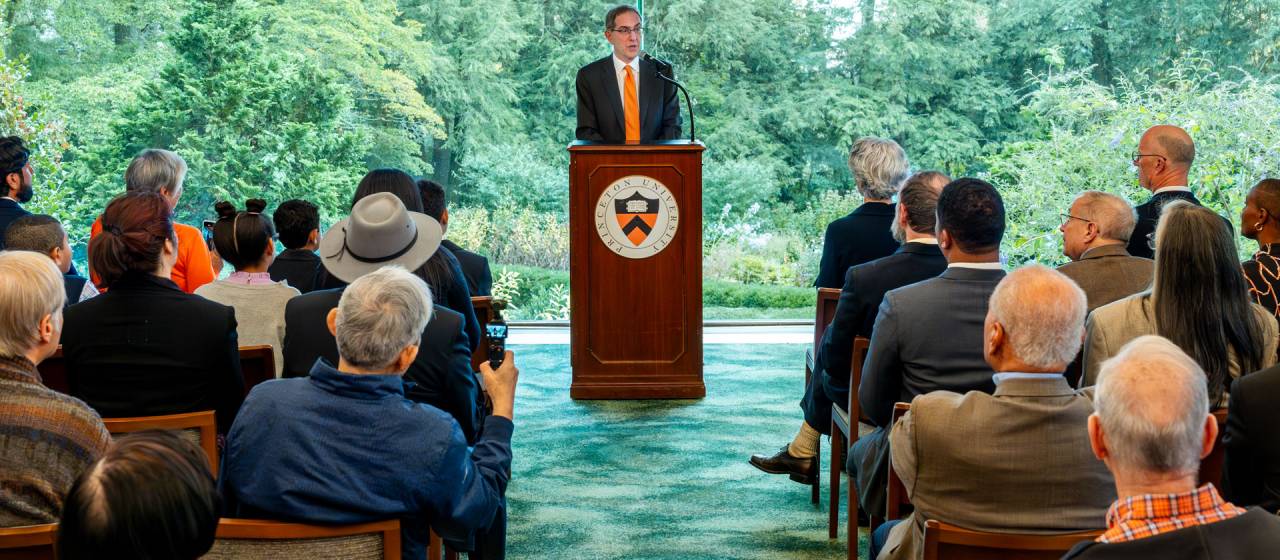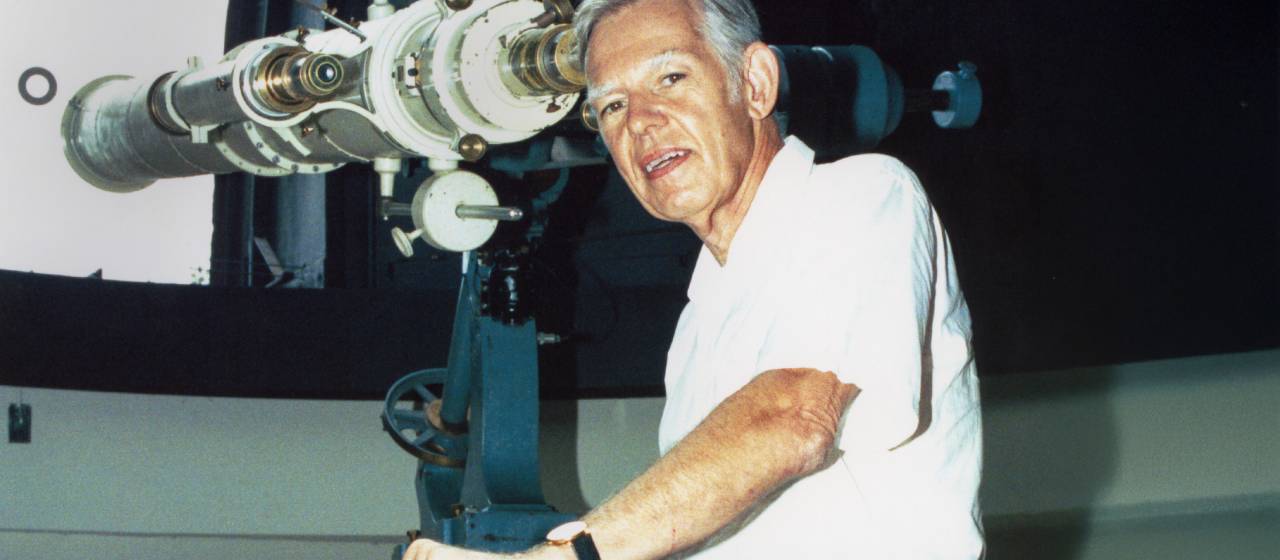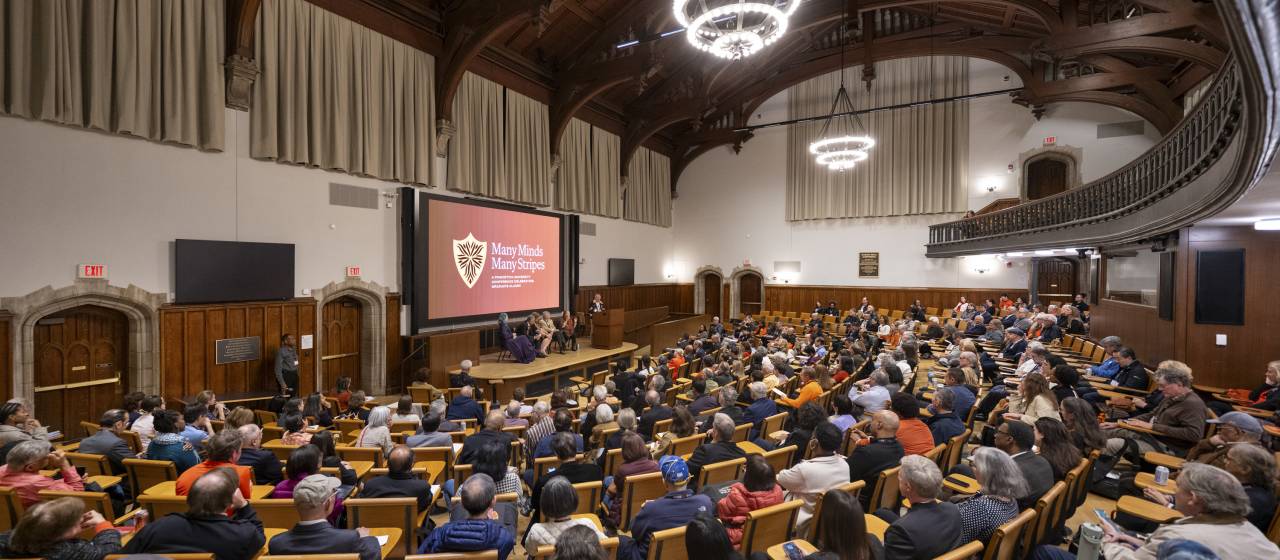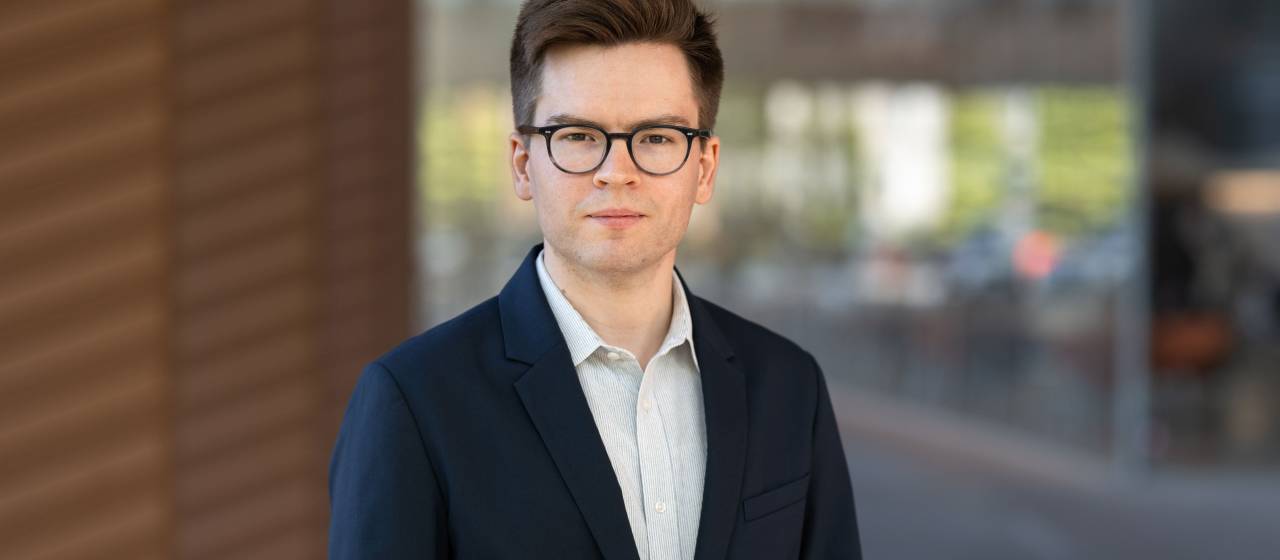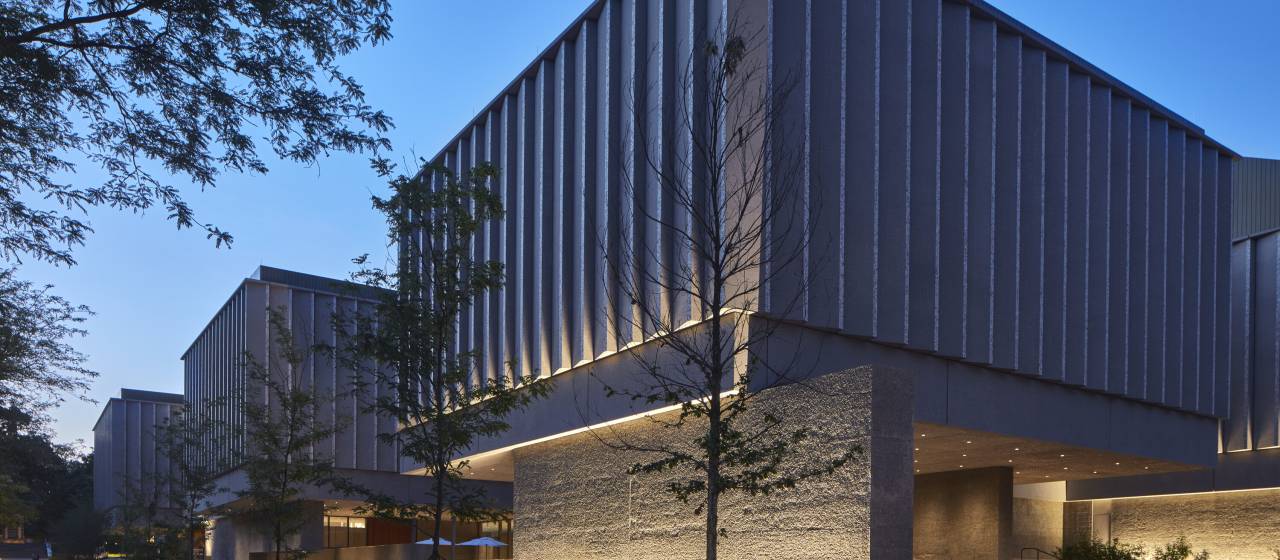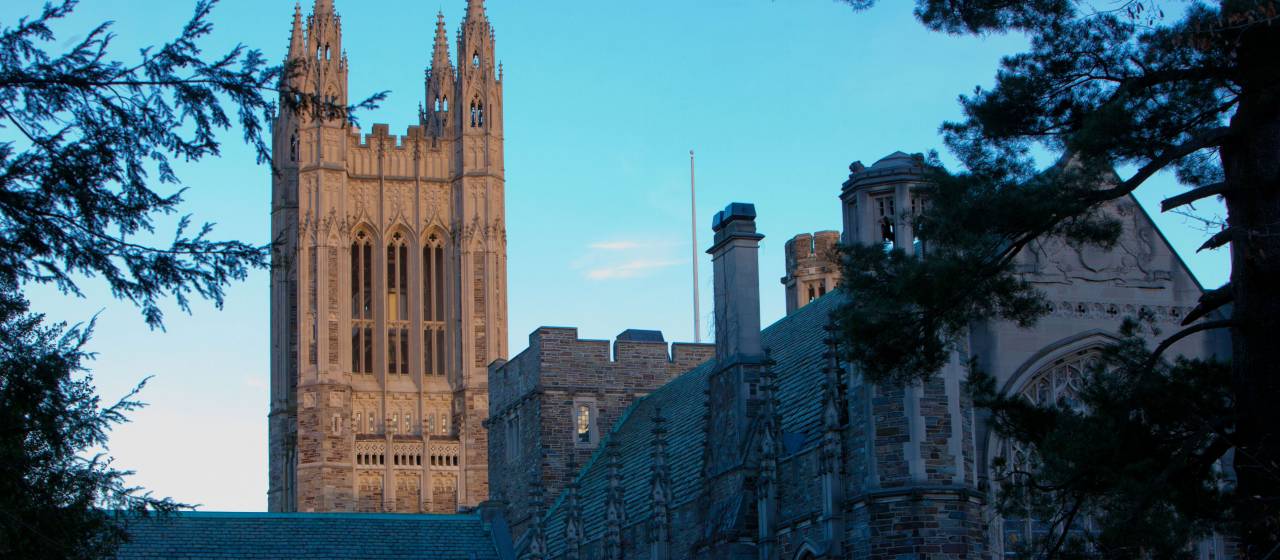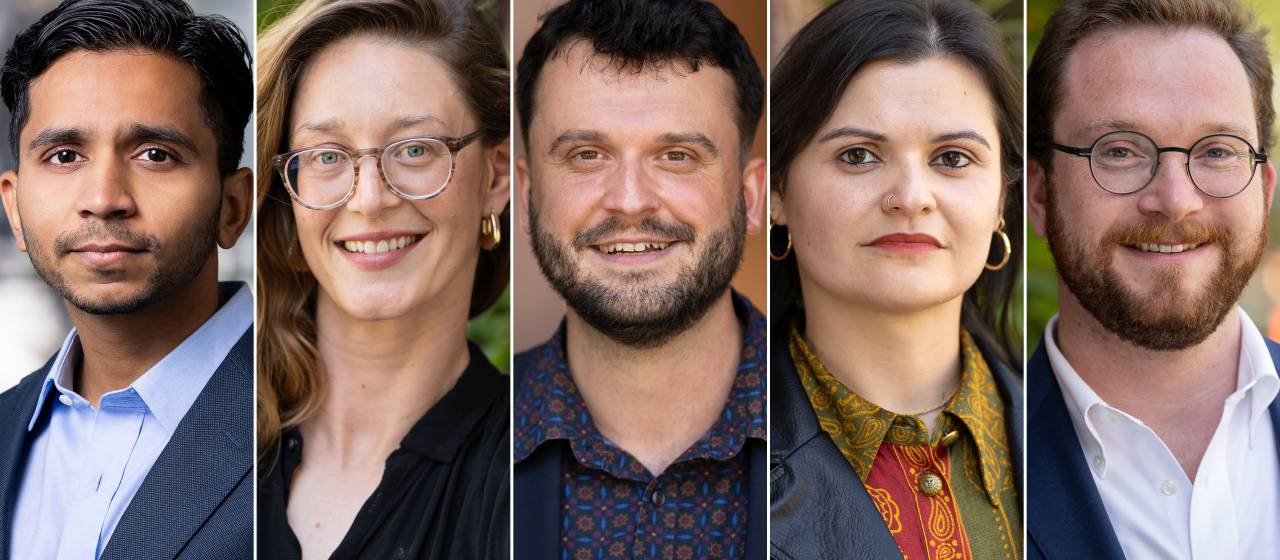Prospect House spaces dedicated for ‘exemplary individuals’ who helped to shape the University and the world
Princeton dedicated a dozen Prospect House spaces on Oct. 22 in honor of faculty, alumni and others who “helped to shape the University and the world” through their achievements and perseverance in the face of adversity.
“Whether they were breaking the Nazis' Enigma code during World War II, helping to vindicate civil rights and achieve equality, or blazing trails for women on campus and beyond, these 12 individuals displayed tenacity,” President Christopher L. Eisgruber said. “Their tenacity enabled them to excel. To persevere. To lead. To pursue their passions. To forge new paths. To fight injustices.”

The Bruce Wright Room is one of 12 Prospect House spaces named in honor of individuals with connections to Princeton's history.
The recently renovated meeting rooms, dining spaces, library and terrace in Prospect House are named for 12 individuals whose impact took many forms and whose lives spanned centuries. The honorees ranged across time from Daniel Wallace Culp, a former enslaved man who became an influential pastor and author, to Class of 1944 graduate John Doar, a prominent figure in the Civil Rights Movement and Presidential Medal of Freedom winner, and to Class of 1980 graduate Sally Frank, who as a student successfully filed a suit that opened the last all-male eating clubs to women.

Class of 1980 graduate Sally Frank stands next to a photo of her as a Princeton student. The Sally Frank Café is named in her honor.
Frank — the only living honoree — attended the Oct. 22 event to officially dedicate the eponymous Sally Frank Café.
“This means the world to me. I could have never imagined this when I was a student here,” said Frank, professor of law at Drake University. Frank said she hopes people who eat at the café will learn more about her history at Princeton. “There’s that old phrase, ‘you can’t fight city hall.’ I want people to know that they can, and they can make change.”
The Prospect House dedication was part of ongoing University efforts to recognize a broad range of people with connections to Princeton’s history through building and space names and through campus art and iconography. The ceremony was attended by family and friends of many of the honorees, as well as faculty, staff, students and alumni.
“By naming Prospect House dining areas, meeting rooms and gathering spaces after these 12 exemplary individuals, the University continues its ongoing work to tell a more complex, and more complete, narrative of Princeton’s history,” Eisgruber said.
The Board of Trustees approved the Prospect House space names based on recommendations from the Council of the Princeton University Community (CPUC) Committee on Naming. Since 2016, the University has named a number of spaces with input from the CPUC naming committee, including Betsey Stockton Garden, Laura Wooten Hall, Ikeda Arch and Sonia Sotomayor Hall.
Professor of History Beth Lew-Williams, former chair of the CPUC naming committee, said the group worked “to keep our search broad and our minds open” when identifying people to honor.
“When considering whether an individual had connections to Princeton, we expanded our search beyond alumni and faculty. When considering whether an individual had ‘rare or exceptional levels of achievement,’ we took historical circumstances into account,” Lew-Williams said.
“Some of the honorees meet traditional metrics of accomplishment; they were national figures tied to major intellectual or political breakthroughs. But we also included individuals who have been previously overlooked despite their contributions to the University and society. We believe there are many manifestations of excellence and role models can be found in unexpected places,” Lew-Williams said before she provided details about each honoree (see below for the full list).
Vice Provost for Institutional Equity and Diversity Michele Minter said she hopes current and future Princetonians will be inspired by the lives of the “12 distinguished individuals.”
“It is a privilege and a responsibility to lift up this history,” Minter said. “As new generations of students, faculty and staff gather in Prospect House, I hope that they will be inspired to make their own commitments to the University — which is always a work in progress — and to the well-being of our country and the world.”
Prospect House, the historic 19th century building that serves as a dining and events venue for faculty, staff and other members of the University community, underwent a major renovation in 2024. The updates include significant accessibility and sustainability improvements, refreshed interior spaces, and a new collection of photography, paintings and sculpture by students, faculty, staff and alumni curated by the Princeton University Art Museum.
“This transformation is both subtle and thrilling,” University Architect Ron McCoy said during the dedication. “With this project, generations of Princeton’s history are now merged with the new narratives … that we honor today, all of which dramatically enhance the community and significance of Prospect House.”
After the ceremony in the Alan Turing Garden Room, named in honor of the 1938 Princeton Ph.D. graduate widely considered the father of computer science and artificial intelligence, guests explored the newly named spaces throughout the building.
Vincent Yuan traveled from New Mexico with family for the dedication of the Chien-Shiung Wu Room, named in honor of his late mother. Wu, a pathbreaking experimental physicist, was the first woman hired as a faculty member in Princeton’s Department of Physics in the 1940s. “It’s a wonderful honor for her,” Yuan said.

Family of Chien-Shiung Wu, a foremost experimental physicist who taught at Princeton in the 1940s, celebrate the dedication of the Chien-Shiung Wu Room.
“This space is just so beautiful,” added Jada Yuan, Wu’s granddaughter. “It’s also been wonderful meeting the other families and learning more about their relatives’ varied and interesting histories.”
In the Charles Hey-Maestre Room on the second floor, Linda Colon, Class of 1975, reminisced about her late husband Charles Hey-Maestre, Class of 1977, whose legal career was devoted to fighting for underserved people in Puerto Rico and elsewhere.
“Charlie would just be so pleased. Princeton meant a lot to him,” Colon said. She added that his Princeton experience “made him appreciate so many more things in the world, but at the same time, he never lost his affinity for finding ways to help the marginalized communities. That has always been his north star.”

John Charles Martin Nash with a photo of his father, John Nash.
Below is the full list of honorees and the Prospect House spaces named for them:
Daniel Wallace Culp (Daniel Wallace Culp Parlor). Born in 1852 as an enslaved person in South Carolina, Culp attended the Princeton Theological Seminary after the Civil War and earned his degree in 1879. As a seminary student, he attended Princeton University classes with the support of then-President James McCosh, despite objections from students. Culp became a minister, physician, lecturer and essayist who fought to raise awareness of Black intellectuals and their work.
John Doar ’44 (John Doar Dining Room). A prominent figure in the Civil Rights Movement of the 1960s, Doar served in the U.S. Army Air Corps during World War II and completed his law degree at the University of California-Berkeley. From 1960 to 1967, as a lawyer in the Department of Justice’s Civil Rights Division, he played a key role in the drafting and enforcement of federal civil rights legislation, including the 1964 Civil Rights Act and 1965 Voting Rights Act. In his role representing the federal government, Doar accompanied James Meredith as he became the first Black student to enroll at the University of Mississippi in 1962 and bravely calmed an angry crowd after the funeral of civil rights leader Medgar Evers in 1963. Doar was recognized for his contributions to civil rights with an honorary degree from Princeton in 1968 and a Presidential Medal of Freedom in 2012. Doar served as a University trustee from 1969 to 1979.
Sally Frank ’80 (Sally Frank Café). Frank is a trailblazing figure in the history of women at Princeton. In 1979, she filed a lawsuit challenging the exclusion of women from the three undergraduate eating clubs that remained all male after the University’s 1969 implementation of coeducation. Following a lengthy legal battle that continued after Frank’s graduation, all three clubs began admitting women by 1991 and Frank officially won her lawsuit in 1992. In addition to her Princeton bachelor’s degree, Frank earned a master’s in clinical education from Antioch University and her law degree from New York University School of Law. She is currently a professor of law at Drake University.
Katharine Fullerton Gerould (Katharine Fullerton Gerould Room). Born in 1879, Fullerton Gerould was a prolific writer and novelist whose work was published in magazines such as Scribner’s, Harper’s and The Atlantic. She taught English and writing at Bryn Mawr College until she moved to Princeton following her 1910 marriage to Professor of English Gordon H. Gerould. As the wife of a faculty member in the early 20th century, Fullerton Gerould often found herself excluded from the University’s intellectual community. She continued to write and received national recognition for her work. She also supported student literary and news organizations such as The Daily Princetonian and Nassau Literary Review.
Charles Hey-Maestre ’77 (Charles Hey-Maestre Room). Hey-Maestre spent his legal career fighting for the rights of underserved and marginalized people in Puerto Rico. He was executive director of Puerto Rico Legal Services and was a staff attorney and administrator at the Puerto Rican Civil Rights Institute. While in private practice, he argued cases before the U.S. Supreme Court and the Supreme Court of Puerto Rico. As an undergraduate, Hey-Maestre helped establish the student organization Acción Puertorriqueña. He earned his undergraduate degree in politics from Princeton and his law degree from the New York University School of Law.
John Nash *50 (John Nash Library). Nash received the Nobel Prize in economics in 1994 for his breakthrough work in game theory. His other awards include the 2015 Abel Prize in mathematics from the Norwegian Academy of Science and Letters. Nash earned his Ph.D. in mathematics at Princeton in 1950 and joined the faculty of MIT in 1951. He returned to Princeton as a senior research mathematician in 1995 and was a legendary figure within the department. His genius at math and his schizophrenia were the subject of the award-winning book and movie “A Beautiful Mind.”

The John Doar Dining Room is named in honor of Doar, a Class of 1944 graduate and prominent figure in the Civil Rights Movement.
Franklin S. Odo ’61 *75 (Franklin S. Odo Room). Odo was an internationally recognized scholar and historian in the field of Asian American studies. He was the founding director of the Smithsonian Asian Pacific American Center from 1997 to 2010. A third-generation Japanese American born in Honolulu, Odo was also the founding director of the University of Hawaii’s Ethnic Studies program. He was a visiting professor at Princeton and taught one of the University’s first courses on Asian American studies in 1995. He also served on the faculty of Amherst College as the John J. McCloy ’16 Visiting Professor of American Institutions and International Diplomacy and as the John Woodruff Simpson Lecturer in American Studies. Odo earned his undergraduate and graduate degrees in history from Princeton and received the 2021 distinguished alumni award from Princeton’s Asian American Alumni Association.
Alan Turing *38 (Alan Turing Garden Room). Considered the father of computer science and artificial intelligence, Turing played a key role in the British government’s decoding of the Nazi’s Enigma codes during World War II. In 1952, Turing was convicted of “gross indecency” and barred from continuing his cryptography work with the British government after admitting to having a sexual relationship with a man — a criminal offense in the United Kingdom at the time. He was posthumously granted a royal pardon in 2013. Turing earned his Ph.D. in mathematics from Princeton in 1938. The University also honored Turing with a commissioned portrait in 2019.
Oswald Veblen (Oswald Veblen Terrace). Veblen was an internationally recognized mathematician who taught at Princeton for 27 years starting in 1905. He played a central role in building Princeton mathematics into a world-renowned department and was instrumental in establishing the Institute for Advanced Study (IAS), where he also served on the faculty. Veblen made important contributions to differential geometry and the early development of topology, which found applications in atomic physics and the theory of relativity. He was also known for his humanitarian work during the rise of Nazism in Germany, helping bring Albert Einstein and other top scholars fleeing Hitler’s regime to U.S. academic institutions, including IAS and Princeton.
Alexander Dumas Watkins (Alexander Dumas Watkins Room). Watkins was a self-educated biologist who conducted scientific research alongside Princeton faculty in the 1880s. He is remembered as the University’s first Black instructor — lecturing on behalf of the faculty with whom he worked — although he was never given a formal academic title. At Princeton, Watkins worked in what was called the histological laboratory. He studied mosquitos’ “venomo-salvatary” glands and made contributions to early malaria research. His work was discussed in academic journals, including Scientific American and the Journal of the American Medical Association.
Bruce Wright (Bruce Wright Room). Wright was a judge in New York for 25 years and served as a justice on the New York State Supreme Court. During his time on the bench, he spoke out against racial injustices in the legal system. He also wrote poetry and co-edited a 1954 anthology of poems with Langston Hughes. Raised in Princeton and New York, he was admitted to the University with a full scholarship in 1939. However, upon learning that Wright was Black, admission officials prevented him from registering for classes and strongly advised that he not attend Princeton. Wright ultimately earned his bachelor’s degree from Lincoln University and his law degree from New York Law School. He also is a veteran of World War II. Princeton’s Class of 2001 named Wright an honorary class member upon its graduation.
Chien-Shiung Wu (Chien-Shiung Wu Room). Known as a foremost experimental physicist, Wu played a crucial role in the advancement of atomic science. In the early 1940s, she became the first woman hired as a faculty member in Princeton’s Department of Physics. In 1944, she left to take a position at Columbia University to work on the Manhattan Project. Wu was the first woman named president of the American Physical Society and the seventh woman elected to the National Academy of Sciences. She received many other national honors for her research, including the Comstock Prize in Physics and the Wolf Prize in Physics. Wu earned her undergraduate degree from what is now Nanjing University in China, her doctoral degree in physics from the University of California-Berkeley and an honorary doctorate of science from Princeton.
Latest Princeton News
- Russell Kulsrud, one of the last survivors of Project Matterhorn, dies at 97
- 'Many Minds, Many Stripes' conference celebrates Princeton's community of graduate alumni
- Michael Skinnider wins 2025 Packard Foundation Fellowship
- A ‘town square for the arts and humanities’: The new Princeton University Art Museum shares opening details
- The ‘Many Minds, Many Stripes’ conference celebrating Graduate School alumni is underway on campus
- Society of Fellows in the Liberal Arts welcomes new scholars



